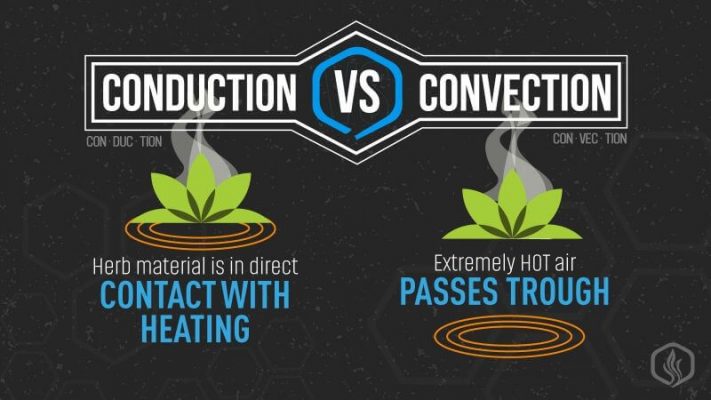Health & Wellness
Conduction vs Convection in a Dry Herb Vaporizer in 2023: Understanding the Key Differences
In recent years, the popularity of dry herb vaporizers has skyrocketed, and for good reason. Dry herb vaporizers provide an efficient, convenient and healthier way of consuming herbs. However, not all vaporizers are created equal, and two of the most important factors to consider when purchasing a vaporizer are the heating method used, and whether it uses conduction or convection heating.
What is Conduction Heating in Dry Herb Vaporizers?
Conduction heating is a process where heat is transferred from one surface to another by direct contact. In a dry herb vaporizer, this means that the heating element comes into direct contact with the herbs, causing them to heat and release their essential oils. Conduction heating is the traditional method used in vaporizers and has been around for many years.
What is Convection Heating in Dry Herb Vaporizers?
Convection heating, on the other hand, is a process where heat is transferred by hot air passing over the herbs, causing them to heat and release their essential oils. In a dry herb vaporizer, this is achieved by a heating element that warms the air, which then passes over the herbs. This method is relatively new and has become increasingly popular in recent years due to its efficiency and the fact that it provides a more consistent and uniform heat distribution.
Advantages and Disadvantages of Conduction Heating
Conduction heating has several advantages, including its lower cost, its simplicity and its quick heating time. However, there are also several disadvantages to consider, such as the risk of combustion, the fact that it can be less efficient in terms of herb utilization and the potential for uneven heating.
Advantages and Disadvantages of Convection Heating
Convection heating has several advantages over conduction heating, including its increased efficiency, its uniform heat distribution and the fact that it reduces the risk of combustion. However, it is also more expensive than conduction heating, and its heating time is generally slower.
Which is Better: Conduction or Convection Heating?
The answer to this question ultimately comes down to personal preference. If you are looking for a fast and affordable option, conduction heating may be the better choice for you. However, if you are looking for a more efficient and uniform heat distribution, convection heating is the way to go.
Final Thoughts
When it comes to choosing a dry herb vaporizer, the decision between conduction and convection heating ultimately comes down to your personal preferences and needs. Both methods have their own advantages and disadvantages, and the best option for you will depend on your specific requirements.
No matter which option you choose, it is important to do your research and choose a vaporizer that is well-designed and built to last. By doing so, you can ensure that you get the most out of your dry herb vaporizing experience, and enjoy the many benefits that this method of consumption has to offer.
- Quality of S&B Volcano Bags - May 9, 2024
- Arizer Ascends: Why I Abandoned Tiny Might and Firefly 2 - May 8, 2024
- Why I switched to a Concentrate Vaporizer in 2024! - May 8, 2024


